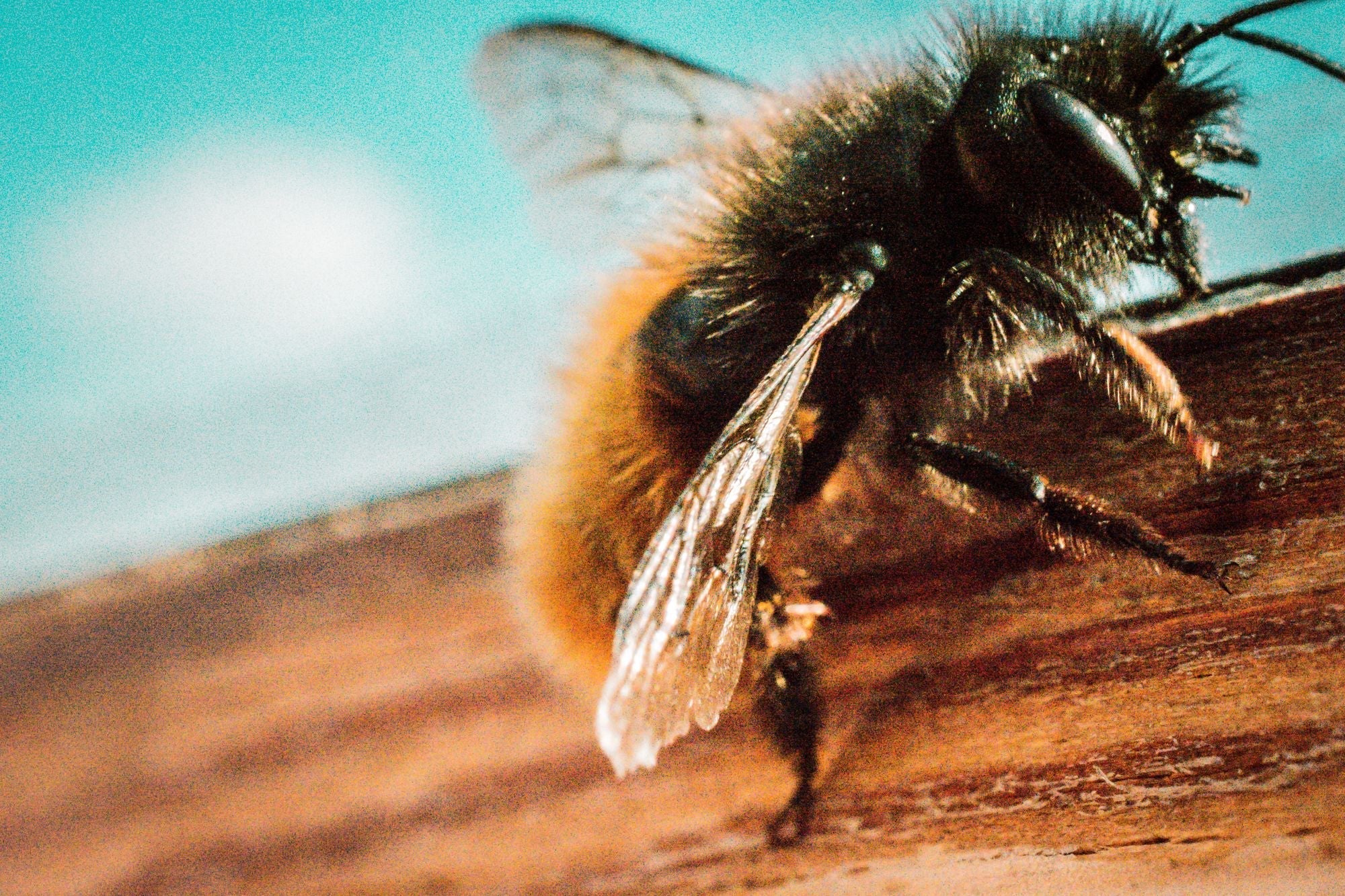American Foulbrood Disease (AFB): Complete Guide for Australian Beekeepers
- American Foulbrood is Australia's most serious bacterial bee disease, caused by spores that can survive for decades in equipment and the environment
- Early detection through regular, systematic inspections is crucial - look for sunken cappings, pupal tongues, and the characteristic foul smell
- AFB spreads easily through robbing, drifting bees, and contaminated equipment, making prevention and rapid response essential
- Australian management emphasizes destruction and prevention rather than antibiotic treatment, following similar approaches to New Zealand
Understanding American Foulbrood in the Australian Context
American Foulbrood (AFB) represents the most devastating bacterial disease affecting honey bee colonies in Australia. Caused by the spore-forming bacterium Paenibacillus larvae, this disease attacks developing bee larvae and pupae, eventually leading to colony collapse if left untreated. What makes AFB particularly challenging for Australian beekeepers is its ability to persist in the environment for decades and spread rapidly between colonies.
Australia has taken a strong stance on AFB management, emphasizing prevention and destruction-based approaches rather than relying on antibiotic treatments. This approach, similar to New Zealand's strategy, aims to eliminate AFB from our bee populations rather than simply managing ongoing infections.
AFB Inspection Techniques: When and How to Check Your Australian Hives
Regular, systematic inspections are your first line of defense against AFB in Australian conditions. Our diverse climate zones mean inspection timing may vary, but the principles remain consistent across all states and territories.
Australian Seasonal Inspection Schedule
AFB inspections should follow Australian seasonal patterns and local brood production cycles:
| Australian Season | Inspection Frequency | Risk Factors |
|---|---|---|
| Spring (Sep-Nov) | Every 2-3 weeks | Rapid brood expansion, post-winter recovery stress |
| Summer (Dec-Feb) | Monthly | Peak brood production, heat stress in northern areas |
| Autumn (Mar-May) | Every 2-3 weeks | Colony stress, robbing pressure during nectar dearth |
| Winter (Jun-Aug) | As weather permits | Limited brood, but check for old infections |
Laboratory Testing and Confirmation in Australia
Australia has several accredited laboratories that provide AFB testing services. Many states require laboratory confirmation before implementing destruction protocols, making professional testing an important part of AFB management.
Australian Laboratory Testing Services
- State department of agriculture laboratories
- University veterinary diagnostic services
- Private veterinary pathology services
- Specialized apiary research institutions
AFB Treatment and Management: The Australian Approach
Australia follows a destruction-based approach to AFB management, similar to New Zealand's strategy. This approach prioritizes long-term elimination of AFB from the bee population rather than ongoing management of infected colonies through antibiotic treatment.
Australian Management Philosophy
Australian AFB management is built on several key principles:
- Prevention First: Focus on preventing AFB introduction through good hygiene and management
- Early Detection: Regular inspections to catch AFB before it spreads
- Rapid Response: Quick action to eliminate AFB sources and prevent spread
- Community Protection: Individual responsibility for broader industry protection
Australian State-by-State Regulations
AFB management regulations vary between Australian states and territories. Always check with your local department of agriculture for current requirements:
| Consideration | Most Australian States | Check Local Requirements |
|---|---|---|
| Reporting Requirements | Mandatory reporting to authorities | Timeframes vary (24-72 hours) |
| Antibiotic Use | Generally restricted or prohibited | Veterinary prescription required if permitted |
| Destruction Requirements | Complete hive destruction typically required | Timeframes usually 7-14 days |
| Quarantine Periods | Site restrictions may apply | Duration varies by state |
The Australian Destruction Protocol
Most Australian states require complete destruction of AFB-infected hives following strict protocols designed to prevent spore survival and spread:
Approved Australian Destruction Method
Step 1: Notification and Approval
Contact your state department of agriculture or apiary inspector before beginning destruction. Some states require official oversight or approval before proceeding. Obtain any required permits for burning in your local area.
Step 2: Site Preparation
Choose a safe location complying with local fire regulations and environmental protection requirements. Dig a pit approximately 1 meter deep and 2 meters wide to contain all burning materials and ensure complete burial of ash.
Step 3: Systematic Burning
Follow the hierarchy: burn infected frames first, then healthy frames from the same hive, followed by boxes and other wooden components. Ensure all wax and wood materials are completely reduced to ash. This typically requires maintaining the fire for several hours.
Step 4: Final Cleanup and Documentation
Cover the pit with soil and mark the location. Document the destruction process with photos and records as required by your state authority. Some states require follow-up inspections or reports.
Alternative Management Approaches in Australia
While destruction is the primary approach, some Australian states may permit alternative methods under specific circumstances and professional supervision:
Supervised Shaking Method
Available in some states under veterinary or inspector guidance:
- Transfer bees to completely new equipment with foundation
- Destroy all contaminated frames, comb, and honey
- Implement intensive monitoring schedule
- May require follow-up treatments if permitted in your state
Prevention Strategies for Australian Conditions
Prevention remains the cornerstone of AFB management in Australia. Our diverse climate conditions and beekeeping practices require adapted prevention strategies.
Australian-Specific Prevention Practices
- Source bees and queens only from reputable Australian suppliers with clean health records
- Avoid importing used beekeeping equipment from unknown sources
- Implement regular comb replacement programs suited to Australian conditions
- Manage robbing risks during Australian nectar dearth periods
- Follow Australian guidelines for equipment sterilization between hives
Feeding Safety in Australia
Safe feeding practices are particularly important in Australia given our restrictions on antibiotic treatment:
- Never feed honey from unknown sources, including supermarket honey
- Use only Australian food-grade sugar or commercial bee feeds
- If feeding honey, ensure it comes from known, AFB-free sources
- Follow irradiation requirements if mandated by your state
Australian Legal and Regulatory Framework
AFB is a notifiable disease in all Australian states and territories, with specific legal requirements that beekeepers must follow.
Common Australian Requirements
- Mandatory Reporting: All suspected AFB cases must be reported to state authorities
- Destruction Timeframes: Typically 7-14 days from confirmation
- Movement Restrictions: May include quarantine of affected apiaries
- Record Keeping: Detailed documentation of inspections and treatments
- Equipment Disposal: Specific requirements for contaminated equipment
Australian State Contact Information
Contact your state department of agriculture for AFB guidance and reporting:
- NSW: NSW Department of Primary Industries - Apiary Unit
- VIC: Agriculture Victoria - Apiary Services
- QLD: Department of Agriculture and Fisheries - Biosecurity Queensland
- WA: Department of Primary Industries and Regional Development
- SA: Primary Industries and Regions SA (PIRSA)
- TAS: Department of Natural Resources and Environment Tasmania
Working with Australian Bee Health Professionals
Australia has a network of bee health professionals ready to assist with AFB detection, management, and compliance with state regulations.
Australian Professional Resources
- State Apiary Inspectors: Government-employed specialists in bee disease management
- Veterinary Specialists: Veterinarians with bee health expertise and prescribing authority
- Extension Officers: Department of agriculture personnel providing educational support
- Research Institutions: Universities and CSIRO specialists for complex cases
- Industry Associations: State beekeeping associations with experienced disease consultants
When Australian Beekeepers Should Seek Help
- Any suspected AFB case - even if you're experienced
- Questions about state-specific legal requirements
- Need for laboratory testing or professional confirmation
- Multiple colonies showing symptoms
- Uncertainty about proper destruction procedures
Economic Impact of AFB in Australian Beekeeping
AFB can have significant economic consequences for Australian beekeeping operations, making prevention and early detection economically critical.
Australian AFB Cost Considerations
| Cost Factor | Typical Australian Impact | Prevention Value |
|---|---|---|
| Equipment Loss | $200-400 per hive destroyed | Equipment sterilization costs $10-20 |
| Bee Population | Complete loss of established colony | Regular inspection time investment |
| Replacement Costs | $150-300 for new colony setup | Biosecurity measures much cheaper |
| Lost Production | 1-2 years to rebuild production | Maintained production with prevention |
Australian Industry Support
Many Australian states offer support programs for AFB-affected beekeepers:
- Compensation schemes for compliant destruction
- Subsidized replacement equipment programs
- Free or reduced-cost laboratory testing
- Educational workshops and training programs
- Technical support for prevention and management
Summary of Key Takeaways
- American Foulbrood is Australia's most serious bacterial bee disease requiring immediate reporting and action under state regulations
- Australian management emphasizes destruction-based approaches and prevention rather than antibiotic treatment
- Regular inspections adapted to Australian seasonal conditions are essential for early detection and community protection
- State departments of agriculture provide support, guidance, and often compensation for compliant AFB management
- Prevention through good hygiene, safe feeding, and equipment sterilization provides excellent economic returns for Australian beekeepers
Ready to Protect Your Australian Colonies from AFB?

Ecrotek Australia provides the tools and knowledge you need for effective AFB prevention and detection. From hive inspection equipment to sterilization supplies, we're here to help you maintain healthy, disease-free colonies that comply with Australian standards.
Shop Hive Health ProductsOr contact our team today for personalised advice on AFB prevention and management strategies that meet Australian regulatory requirements.

